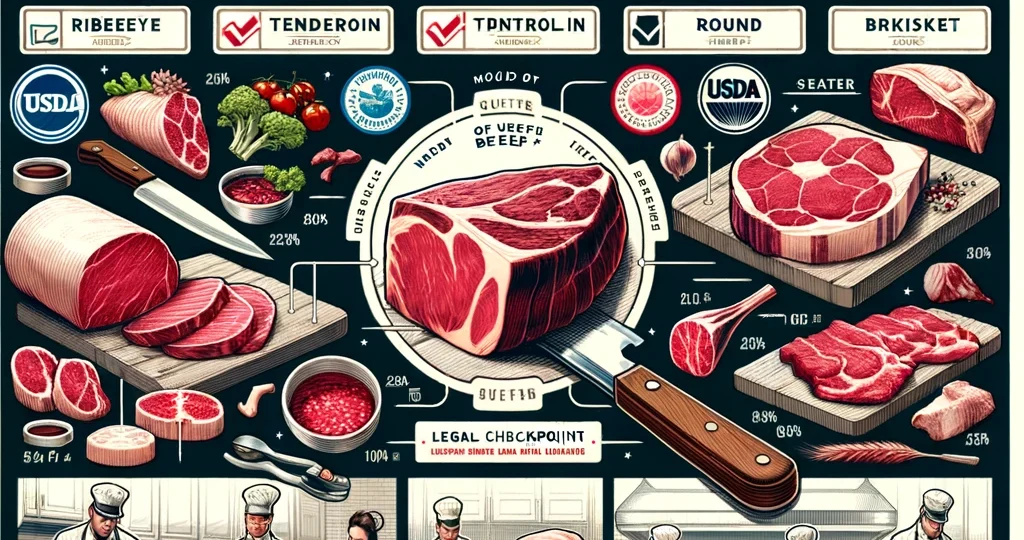
In the bustling world of beef, every cut has its own unique story, defined by its texture, flavor, and culinary role. In this blog, we slice into the fascinating realm of beef cuts, highlighting their distinct characteristics and the legal framework that defines them.
The Premium Delights: Ribeye and Tenderloin
In the world of beef, certain cuts stand out for their luxurious quality. The rib section of the cow gives us the rich and juicy ribeye, while the short loin is responsible for the exquisite tenderloin and T-bone steaks. Revered for their tenderness and robust flavor, these cuts are grilling favorites, requiring little more than basic seasoning to shine.
Economical and Flavorful: Chuck and Round
On the more economical side, we find cuts like the chuck and round. These parts are leaner and more muscular, making them ideal for methods like slow cooking and braising, which tenderize the meat while enhancing its flavor.
The BBQ Star: Brisket
The brisket, hailing from the cow’s lower chest, is a barbecue staple. Its rich marbling is perfect for long, slow cooking, transforming it into a tender, flavor-packed delight.
Understanding USDA Beef Grading
In the United States, the USDA grading system – Prime, Choice, and Select – plays a pivotal role in categorizing beef based on quality and marbling. Prime represents the pinnacle of quality, followed by Choice and Select, offering a range of options for different preferences and budgets.
Legalities of Beef Labeling
Beef labeling is an area governed by stringent regulations. Legal terms such as ‘grass-fed’, ‘organic’, or ‘antibiotic-free’ are not just marketing terms; they carry specific legal definitions and standards that producers must comply with. The journey of beef from pasture to plate is intricately regulated, ensuring that every piece of meat meets the highest standards of safety, quality, and transparency. This comprehensive oversight benefits consumers, providing them with assurance and clarity.
Enhancing Culinary Experiences with Knowledge
Whether it’s indulging in a luxurious filet mignon or savoring a hearty pot roast, understanding the various cuts of beef not only enhances our culinary experiences but also enriches our knowledge of food regulations.
